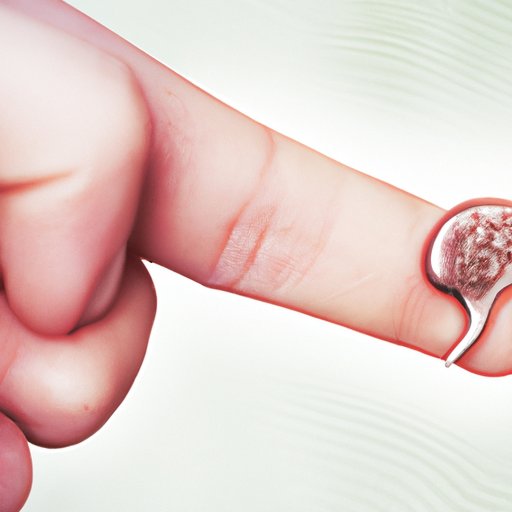
Introduction
Dementia is a condition that affects millions of people worldwide. It can be devastating for the individuals affected by it and their families. There are various forms of dementia, each with unique characteristics and symptoms. One such form of dementia is Picks Disease.
In this article, we will explore what Picks Disease is, how it differs from other forms of dementia, its causes and risk factors, prevalence, symptoms, treatment options, and how it affects the brain. We will also provide tips for caregivers and a comprehensive guide to the progression of the disease.
Picks Disease: Understanding This Rare Form of Dementia
Picks Disease, also known as frontotemporal dementia, is a rare form of dementia that primarily affects the frontal and temporal lobes of the brain. It is the result of the accumulation of tau proteins in the brain. These proteins are the same ones found in Alzheimer’s disease, but they accumulate differently in Picks Disease.
The History of Picks Disease
Picks Disease was first described in 1892 by Arnold Pick, a Czech psychiatrist. He observed a patient with symptoms of cortical atrophy, which is the wasting away of brain tissue. Over time, the condition became known as Picks Disease, in honor of its discoverer.
How It Differs from Other Forms of Dementia
Compared to other forms of dementia, Picks Disease typically affects individuals at a younger age. It also progresses more rapidly and has different symptoms than other forms of dementia. The disease also affects different regions of the brain. In Alzheimer’s disease, the hippocampus is primarily affected, while Picks Disease affects the frontal and temporal lobes. The onset of Picks Disease is typically gradual, and the symptoms become more apparent over time.
Everything You Need to Know About Picks Disease
Causes and Risk Factors
The exact cause of Picks Disease is not known. However, scientists believe that it occurs due to a combination of genetic and environmental factors. There is some evidence that if a family member has Picks Disease, there is an increased risk of developing the disease.
Prevalence and Demographics
Picks Disease is a rare form of dementia, accounting for only a small percentage of all cases. It generally affects individuals between the ages of 40 and 60 years old. Males and females are affected equally.
Symptoms and Stages
The symptoms of Picks Disease depend on the region of the brain that is affected. The disease affects the frontal and temporal lobes of the brain, which are responsible for behavior, emotion, and language skills. The symptoms of Picks Disease include:
- Changes in behavior and personality
- Difficulty with language skills
- Inappropriate social behavior
- Poor judgment and decision-making skills
- Mood changes, including depression and anxiety
- Motor problems and muscle weakness in later stages
Picks Disease progresses in stages, and the symptoms become more severe over time. In the early stages, individuals may experience mild symptoms, such as changes in behavior and personality. However, as the disease progresses, the symptoms become more severe, and individuals may lose their ability to communicate and care for themselves.
Breaking Down the Symptoms and Treatment Options for Picks Disease
Cognitive and Behavioral Symptoms
The cognitive and behavioral symptoms of Picks Disease can be challenging to manage. Individuals with the disease may experience changes in their behavior and personality, making it difficult for caregivers to provide appropriate care. Cognitive symptoms may include:
- Language problems, including difficulty speaking and understanding speech
- Difficulty with organization, planning, and problem-solving
- Social and emotional changes, including depression and anxiety
- Aggressive behavior, including verbal and physical aggression
- Changes in eating habits
Physical Symptoms
In the later stages of Picks Disease, individuals may experience physical symptoms, including muscle weakness, tremors, and difficulty with motor skills. These symptoms can make it difficult for individuals to perform daily tasks, requiring assistance from caregivers.
Treatment Options, Including Medication and Therapy
There is currently no cure for Picks Disease. However, treatment can help manage symptoms and improve quality of life. Treatment options include medication to manage mood changes and behavioral problems. Therapy can also be beneficial for individuals with Picks Disease to help manage their symptoms.

The Science Behind Picks Disease: How It Affects the Brain
Neurological Changes in the Brain
Picks Disease is caused by the accumulation of tau proteins in the brain. These proteins build up and form clumps, leading to brain cell damage and death. The accumulation of these proteins primarily affects the frontal and temporal lobes of the brain, leading to cognitive and behavioral symptoms.
How These Changes Impact Behavior and Cognition
As the tau proteins build up and damage brain cells, individuals with Picks Disease experience changes in their behavior and cognitive abilities. The frontal and temporal lobes of the brain are responsible for a variety of functions, including language, problem-solving, and social behavior. Damage to these regions can lead to changes in personality, mood, and behavior.
Caring for a Loved One with Picks Disease: Tips for Caregivers
Coping Strategies for Caregivers
Caring for a loved one with Picks Disease can be challenging. It is essential for caregivers to have an understanding of the disease and how it impacts their loved one to provide appropriate care. Some strategies for coping include:
- Seeking support from family and friends
- Joining a support group for caregivers of individuals with dementia
- Taking breaks and practicing self-care
- Using positive language when communicating with their loved one
Important Considerations for Managing Care
Managing care for an individual with Picks Disease requires careful consideration of their needs and abilities. Some tips for managing care include:
- Creating a routine to provide structure for the individual
- Adapting the home environment to meet their needs, such as installing grab bars and handrails
- Providing assistance with daily activities, such as bathing and eating
- Minimizing distractions in the environment to reduce anxiety
From Early Onset to Late Stage: A Comprehensive Guide to Picks Disease Progression
How Picks Disease Progresses Over Time
Picks Disease progresses in stages, with the symptoms becoming more severe over time. In the early stages, individuals may experience mild symptoms, such as changes in behavior and personality. However, as the disease progresses, the symptoms become more severe, and individuals may lose their ability to communicate and care for themselves.
Stages of the Disease and Their Associated Symptoms
The stages of Pick Disease are:
- Stage 1: Early Onset – Individuals may experience mild changes in behavior and personality, including changes in mood and social behavior. Language skills and cognitive abilities may also be affected.
- Stage 2: Moderate Onset – As the disease progresses, individuals may experience more severe symptoms, including difficulty communicating, impaired judgment, and changes in personality and behavior.
- Stage 3: Advanced Onset – In the later stages of the disease, individuals may experience physical symptoms, including muscle weakness and tremors. They may also experience changes in eating habits and require assistance with daily tasks.
What to Expect as the Disease Progresses
As the disease progresses, individuals with Picks Disease may experience more severe symptoms and require more care. They may also experience physical symptoms, such as muscle weakness and tremors. It is essential for caregivers to have an understanding of the disease and how it progresses to provide appropriate care.
Conclusion
Picks Disease is a rare form of dementia that primarily affects the frontal and temporal lobes of the brain. It is caused by the accumulation of tau proteins and progresses in stages. Managing care for an individual with Picks Disease can be challenging, but it is essential for caregivers to have an understanding of the disease and how it impacts their loved one. Education and advocacy for individuals and families impacted by Picks Disease are crucial.




